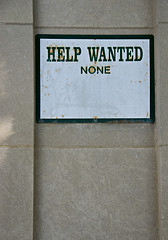 Outsourcing. Smaller recruitment programs. Disappearing associate positions. The troubling career statistics for new lawyers in the U.S. have been well documented in the past couple of years. So why, asks writer David Segal in a recent New York Times feature, aren’t law schools adjusting enrolment to reflect this shrinking job market?
Outsourcing. Smaller recruitment programs. Disappearing associate positions. The troubling career statistics for new lawyers in the U.S. have been well documented in the past couple of years. So why, asks writer David Segal in a recent New York Times feature, aren’t law schools adjusting enrolment to reflect this shrinking job market?
“You may think of law schools as training grounds for new lawyers, but that is just part of it,” Segal writes. “They are also cash cows.”
Segal’s piece tells a tale of law schools recruiting the best and brightest by citing reassuring figures for graduate employment. But, it turns out, people with law degrees are counted as employed even if they’re not working as lawyers. Does a J.D. help you negotiate a larger gratuity from that table of 10 Big Law partners you waited on at lunch today? According to Segal, some American law schools seem to think so.
Of course, there are other considerations that affect the statistics. “As many deans acknowledge,” Segal writes, “the results are skewed because graduates with high-paying jobs are more likely to respond than people earning $9 an hour at Radio Shack.” And not all law schools are painting an overly rosy picture of a new lawyer’s job prospects.
There’s another problem, too: people applying to law school tend to be headstrong and laser-focused on that path, and it can be hard to dissuade them. But the grim tales Segal tells of the struggles of new lawyers stateside — including his article’s primary focus, who so far has worked for $10 an hour at a firm in Queens, and as a temp reviewing documents in a “small, windowless room with five other lawyers” — might just do the trick.
Photo by Seth Anderson

